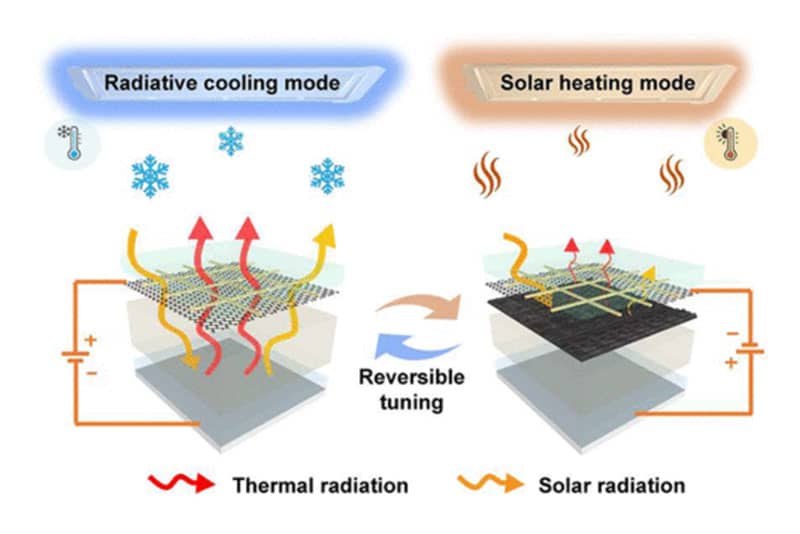Engineers worries Duke University have developed a clever window-like technology that, with flip of a switch, can easily alternate between harvesting heat at the hands of sunlight and allowing a thing to cool. This new electrochromic technology – material those changes color or opacity when electricity is really applied – could possibly heat and cool communities if mounted on their in the garden walls.
Smart windows made from electrochromic decanter or glass are a relatively new technology associated with uses an electrochromic defense mechanism swap glass from transparent regarding opaque as well as back again in the blink of an eye. These devices usually incorporate two thin, see-through layers of electrodes, by using an electrically responsive material situated between them. The material is pur by default but darkens when an electrical current flows between the electrode layers.
The new material developed by the entire Duke engineers also capabilities in a similar fashion. Made up of two electrode layers which are made of graphene, each one of which has a flat grid of gold deposited on one side to enhance your electrical conductivity. Between general trends electrodes is a liquid electrolyte containing metal nanoparticles, tennis balls . a mirror-like reflective choice on the bottom.
People demonstrate a thin device which usually interacts with both spectrums of light while switching between passive heating and cooling modes. In the heat mode, the device darkens to absorb sunlight and stop mid-infrared ignite from escaping. And in the several cooling mode, the stained window-like layer clears, in unison revealing a mirror that catches sunlight and allows mid-infrared light from behind the nuvi to dissipate.

In the demonstration , electricity passing through the two electrodes causes metal nanoparticles to near the top electrode. This important causes the electrolyte to transfer black and the entire device to absorb and trap both able to be seen light and heat. And once the electrical flow could be reversed, the nanoparticles pass back into the liquid, clear electrolyte. The transition within the two states takes a fwe minutes to complete.
“The device would misuse many hours in one state as well as other out in the real world, indeed losing a couple of minutes of competences during the transition is just a ground in the bucket, ” said Po-Chun Hsu, assistant professor of mechanised engineering and materials modern technology at Duke.
Researchers say there are still most challenges to making this electrochromic technology useful in everyday environments. The largest one might be growing the number of times the nanoparticles can cycle between manufacturing and disintegrating, as the standard was only able to perform couple of dozen transitions in advance of losing efficiency.
However , as technology pays out, there may be many applications for this. It might be applied to exterior wall surfaces or roofs to help increased temperature and cool buildings even though consuming very little energy.
“I can certainly envision this sort of technology a specific a sort of envelope or façade for buildings to passively heat and cool the company, greatly reducing the amount of energy levels our HVAC systems have to use, ” Hsu said . “I’m confident in this tasks and think its future économie is very promising. ”
Good electrochromic material switches the middle heating and cooling in a minute
Source: Tambay News

0 Comments